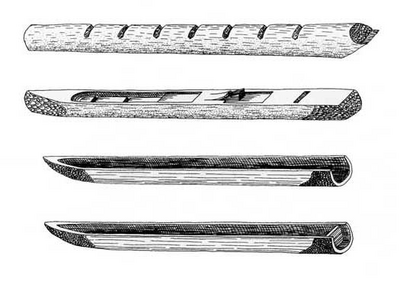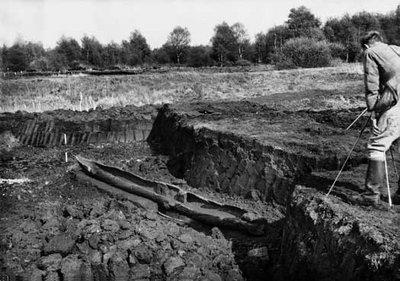The dugout boats of the Stone Age
The remains of dugout boats have been found at excavations in waterlogged environments, where wood is preserved. Many of the Stone Age boats have been excavated by divers at underwater settlements or found during peat-digging at inland bogs. The boat remains are often soft and deformed after the long period in the seabed or bog. Chips and pieces from the chopping and splitting of wood for dugout boats have also been found in certain cases.
The dugouts of the Mesolithic period were mostly of limewood, a kind of wood which is easy to work with a flint axe and does not split easily. The boat sides were worked to a thickness of around 1-2 cm and the bottom to around 3-5 cm. The bow was pointed and the stern cut off straight and finished with a half-circular bulkhead. This loose plate was fastened to the boat’s inner side by pegs. In this way it was possible to create a light and flexible vessel weighing 250-350 kg, which could carry between six and eight people at a time. If the wooden boat split or started to crack, the damaged area could be sewn together or sealed with pitch or clay. It was easier to repair the boat than to hollow out a new one!



